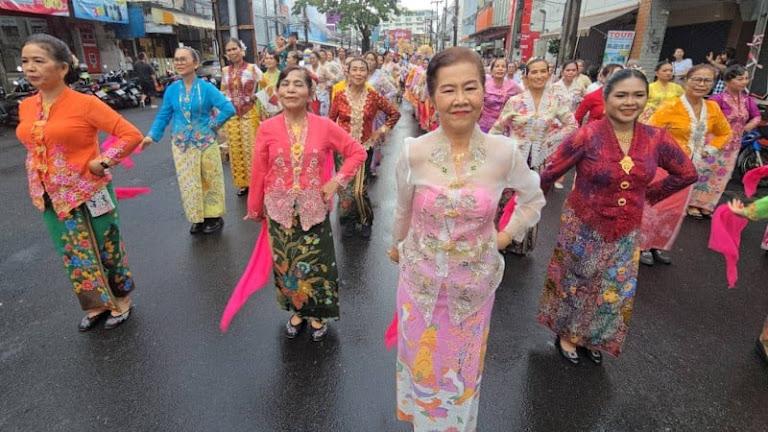Phuket Parade Celebrates Heritage, Seeks Global Economic Boost
Showcasing Peranakan heritage, Phuket’s parade strategically intertwines cultural preservation with ambitious economic goals, aiming to boost the island’s international profile.

The third annual Phuket Peranakan World Parade & Carnival recently concluded, with thousands participating in a vibrant display of culture and tradition. As reported by The Phuket News, the event wasn’t just a local celebration; it was a carefully orchestrated initiative aimed at solidifying Phuket’s position on the global stage. It’s tempting to view events like these as mere tourist traps, but digging deeper reveals a more complex interplay of cultural preservation, economic development, and international relations. The involvement of the Tourism Authority of Thailand (TAT), the Thailand Convention and Exhibition Bureau (TCEB), and the Peranakan Association of Thailand highlights a strategic alignment of interests.
The parade itself, featuring over 20 segments traversing Phuket Old Town, was a microcosm of these interconnected goals. Traditional music, dance, and costumes served as a powerful visual reminder of Peranakan heritage. But the inclusion of elements like Phuket’s cabaret scene and water parks signals a broader effort to present a multifaceted, contemporary image of the island. This deliberate juxtaposition of old and new raises an interesting question: how do communities balance the preservation of cultural authenticity with the demands of a rapidly evolving globalized world?
Consider the “Sound of Hope” procession, featuring student musicians and symbolic “Fufu bats.” This wasn’t just a charming performance; it was a deliberate tie-in to Phuket’s upcoming role as host of the “Thailand Biennale Phuket 2025,” a contemporary art festival. This synchronization reveals a coordinated strategy to leverage cultural events to boost tourism and attract international attention. The effort to break a Guinness World Record by serving 800 dishes of Phuket Hokkien noodles is another example of this strategic synergy.
This festival’s success, recognized by awards from various organizations, can be attributed to several key factors:
- Community Engagement: The active participation of local schools, artists, and food associations fosters a sense of ownership and strengthens community ties.
- Regional Collaboration: The inclusion of groups from neighboring countries like Malaysia, Indonesia, and Singapore promotes cross-cultural exchange and strengthens regional partnerships.
- Strategic Marketing: The event is carefully positioned as a means of promoting Phuket’s cultural identity and attracting both domestic and international tourists.
The seemingly simple parade serves as a reminder of the increasingly sophisticated ways in which governments and organizations are using culture to shape perceptions, drive economic growth, and navigate the complex landscape of global tourism.
It’s easy to dismiss these kinds of events as simply catering to the tourist gaze, but that misses the crucial point: these cultural celebrations are powerful tools for nation-branding, fostering local pride, and strategically positioning destinations within the global economy. The question is not whether these efforts are “authentic,” but how they are shaping the narratives and realities of the places they represent.









